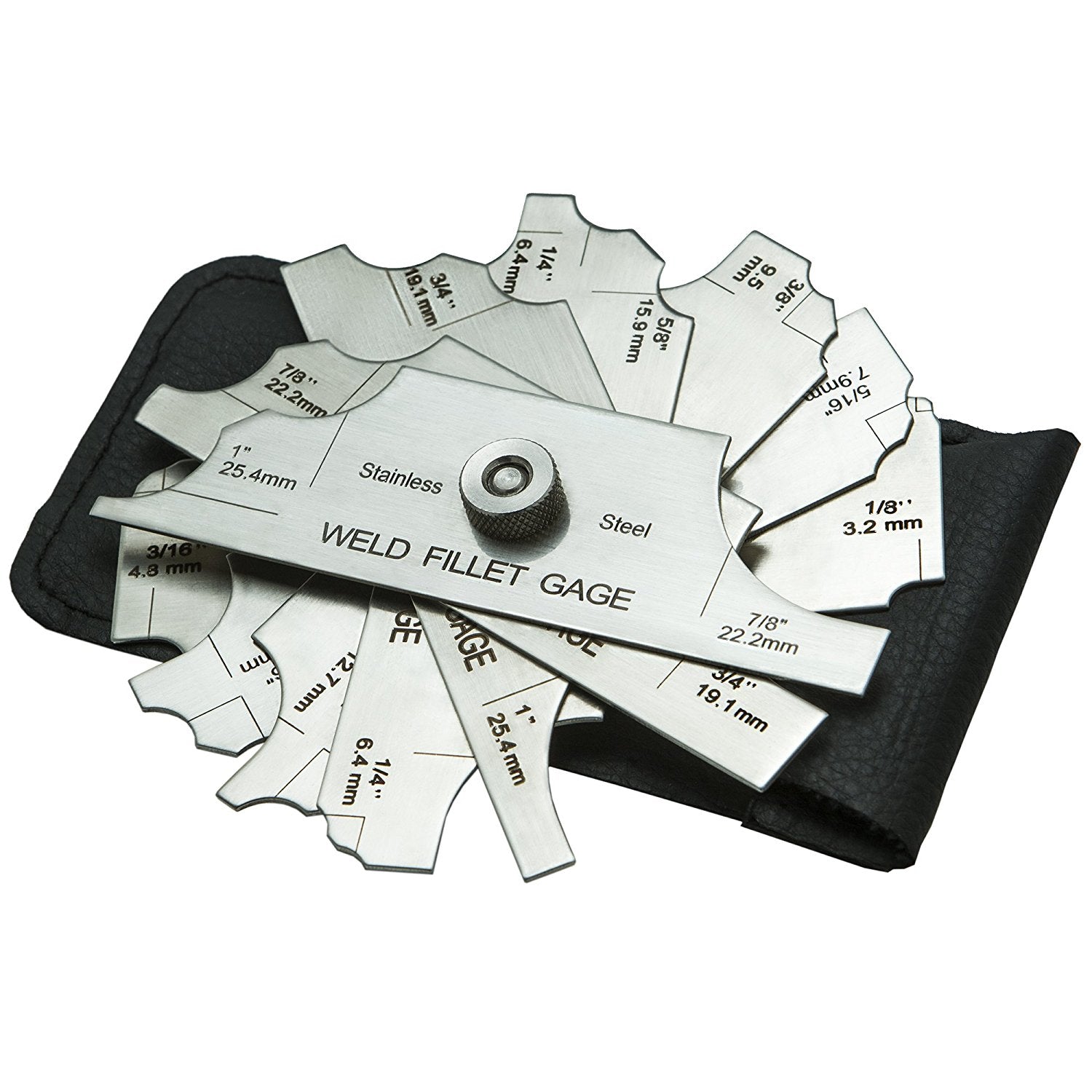The Ultimate Guide to Fillet Weld Quality Assurance: Making Sure Toughness and Durability in Your Welded Joints
In the realm of welding, making sure the stamina and toughness of fillet welds is extremely important for the stability of bonded joints. As we get started on this expedition of fillet weld quality control, we will reveal crucial aspects that influence weld strength, dig into effective examination methods, and review strategies for avoiding usual weld problems.
Relevance of Fillet Weld Top Quality Control
Making sure proper fillet weld top quality control is paramount in assuring the structural stability and longevity of welded parts in different industries. Fillet welds are commonly used in architectural steelwork, bridges, pressure vessels, pipelines, and various other vital infrastructure where the toughness of the weld is critical to overall safety and performance. Quality control measures such as visual inspections, non-destructive screening, and adherence to welding procedures help identify prospective flaws like lack of blend, incomplete penetration, damaging, or too much reinforcement.
Secret Aspects Impacting Weld Strength
Achieving ideal weld toughness requires mindful factor to consider of numerous essential aspects that influence the stability and toughness of the welded joint. The very first critical aspect appertains joint preparation, which includes cleansing the base steels to eliminate any pollutants that could deteriorate the weld. In addition, the fit-up of the joint is important to ensure appropriate infiltration and blend of the filler product.
The selection of the ideal welding strategy and criteria also plays a significant function in identifying weld toughness. Aspects such as heat input, travel speed, and electrode angle can impact the quality of the weld. Additionally, keeping the proper interpass temperature level throughout multi-pass welding is essential to avoid breaking and ensure a solid bond in between the layers.
Furthermore, the choice of filler material and its compatibility with the base metals is essential for attaining high weld toughness. Making use of filler material with the proper mechanical properties can boost the total honesty of the weld. Post-weld warm therapy and appropriate evaluation techniques are essential actions in guaranteeing the strength and toughness of the bonded joint.
Assessment Approaches for Weld Stability

One more important inspection technique is fluid penetrant screening, where a fluid color is put on the weld surface - Gauge Fillet Weld. The dye seeps into any type of surface-breaking problems, making them noticeable under UV light. This approach works for discovering imperfections that may not be visible to the naked eye


Ultrasonic testing is also commonly used for inspecting weld honesty. High-frequency noise waves are routed right into the weld, and any type of interruptions in the acoustic wave pattern suggest possible issues like fractures or absence of blend.
These examination techniques play a crucial duty in ensuring the high quality and integrity of welds, inevitably adding to the overall strength and longevity of bonded joints in commercial setups.
Preventing Usual Weld Problems
In order to maintain the architectural integrity of welded joints in industrial applications, it is crucial to apply safety nets to attend to common weld defects. One common problem is absence of blend, where the filler product falls short to bond appropriately with the base steels, bring about vulnerable points in the weld. This can be protected against by making certain correct warmth control and utilizing the appropriate welding strategy.
An additional constant concern is porosity, triggered by gas entrapment in the weld steel during the welding procedure. To avoid this, it is necessary to clean the base steels completely, utilize dry electrodes, and maintain an ideal welding environment with appropriate air flow.
Furthermore, cracks in welds can endanger the joint's stamina. To avoid this additional reading issue, it is essential to regulate the cooling rate after welding, make use of preheating when needed, and select ideal welding specifications.
Enhancing Bonded Resilience With Proper Techniques
To strengthen the durability and integrity of welded frameworks, using innovative welding methods is important. One essential technique this contact form to boost weld sturdiness is to make sure proper weld bead placement. By positioning the weld bead accurately within the joint, the weld's strength and resistance to exhaustion can be significantly enhanced. In addition, using the appropriate welding specifications, such as voltage, existing, and travel rate, is crucial for achieving a long lasting weld. These criteria directly affect the weld's infiltration, combination, and total quality, contributing to its long life.
Selecting the best filler metal and ensuring the tidiness of the base steels can protect against incorporations and various other defects that could jeopardize the weld's toughness. By applying these correct techniques, welders can make certain that their bonded joints display outstanding strength and sturdiness, meeting the highest possible top quality requirements.
Conclusion
In final thought, preserving top quality control requirements for fillet welds is essential for making sure the strength and sturdiness of welded joints. By recognizing the essential factors impacting weld toughness, utilizing inspection approaches for weld stability, stopping typical weld issues, and employing proper methods, welders can enhance the general longevity of their welds. It is vital to focus on top quality control actions to produce reliable and long-lasting bonded joints.
In the world of welding, guaranteeing the strength and toughness of fillet index welds is extremely important for the stability of bonded joints. As we get started on this exploration of fillet weld quality control, we will certainly uncover important elements that affect weld toughness, dive right into reliable evaluation methods, and discuss methods for avoiding typical weld flaws.Accomplishing optimum weld strength needs careful consideration of various key factors that affect the integrity and resilience of the welded joint (Gauge Fillet Weld).In final thought, preserving high quality control requirements for fillet welds is critical for making certain the toughness and toughness of bonded joints. By understanding the essential elements influencing weld strength, using inspection approaches for weld integrity, preventing common weld flaws, and using appropriate methods, welders can improve the overall toughness of their welds